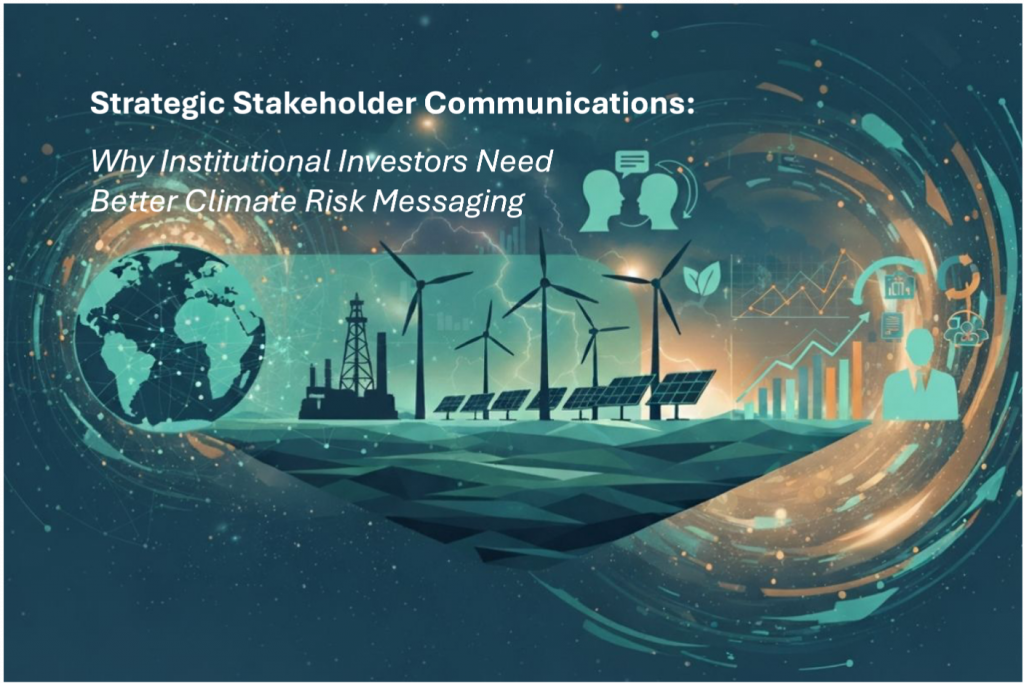Strategic Stakeholder Communications: Why Institutional Investors Need Better Climate Risk Messaging

For a variety of (mostly valid) reasons, institutional investors tend to silo into defined peer groups. Yet, engaging with market participants outside of your institution’s peer group helps avoid ‘groupthink’, particularly when connecting with impact investors.
This notion was on display on October 27-28 at the Intentional Endowments Network’s (IEN) 2025 Annual Forum, where a diverse group of asset owners, asset managers, investment consultants, and other market participants shared their unique goals, operational constraints, and investment approaches around impact. Topics covered included, among others, systems-level investing and the fiduciary case for ESG integration.
The impact investing community offers a valuable space to exchange ideas and experiment with new approaches. By participating in these conversations, all institutional investors can learn more about themes that are moving from niche to mainstream. Indeed, impact investing forums can help institutional investors stay ahead of the curve.
FFI and our partner, Edelman Smithfield, were invited to this year’s IEN’s 2025 forum to present a workshop on stakeholder management. What we heard from participants reinforced our view that calibrated stakeholder communications are integral to strategy — especially around politicized themes.
“Investors that can articulate how they are managing climate risks (and opportunities) gain trust from a broad set of stakeholders, while inaction invites reputational risk.”
Calibrated communications as a strategic advantage
Although impact investors are somewhat insulated, they are not immune to external pressure. In today’s polarized environment, it can be challenging for all investors to communicate the value of incorporating risks often broadly labeled as “ESG” into their investment processes. And at the same time, market participants are increasingly recognizing some of these risks as financially material, even though they may not yet be fully reflected in current asset prices.
As an example, incorporating climate-related financial risks into investment processes shouldn’t stop at the investment decision — calibrated engagement with beneficiaries, communities, regulators, and the broader public remains important. In a political climate where issues can become increasingly public and contested, articulating your institution’s approach in a way that resonates with diverse stakeholders can be a strategic advantage.
Values and value
In this environment, stakeholder communications functions, in part, as a line of defense, and an opportunity not fully embraced by the investment community. Investors that can articulate how they are managing these risks (and opportunities) gain trust from a broad set of stakeholders, while inaction invites reputational risk.
Impact investors typically frame their investment approach through a values-based lens, while other institutional investors frame their activities through a value-creation lens, grounded in risk-adjusted returns. For the latter group of investors, in particular, calibrated stakeholder communications around climate are not just important — they are integral to maintaining trust, building credibility, and framing a value-driven investment strategy.

David Root
Head of Product Management
